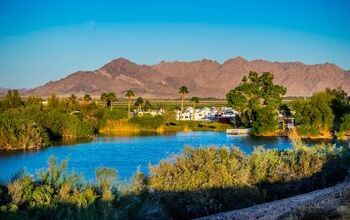Cost Of Living In Fairbanks, Alaska (Taxes, Housing & More)

Boasting the largest city in the interior region of Alaska, Fairbanks is home to over 31,000 people, and gets thousands of visitors each year. People come from all around to see the Northern Lights or experience the nature and wilderness Alaska has to offer.
With a cost of living index of just 108.6, you might be thinking that Fairbanks is an affordable place to raise a family. And in some ways, you’re not wrong – but beware! There are a lot of hidden costs to living in Fairbanks. Before you commit and book that plane ticket, be sure you have all the financials in order… including the incredibly high utility bills!
Do You Need to Hire Movers?
Get free, zero-commitment quotes from pro contractors near you.

Housing
Housing costs are high in Fairbanks, but they are lower than the Alaska state average. The homeownership rate in Fairbanks is 33.3%, and the median home value is $250,433.
| Location | Median Home Value | Homeownership Rate |
| Fairbanks | $250,433 | 33.3% |
| Juneau | $371,147 | 62.8% |
| Alaska | $292,066 | 65.6% |
| United States | $320,000 | 65.8% |
With a housing cost of living index at 106.7, buying and owning land in Fairbanks, Alaska, is slightly more expensive than the average US city. Homeownership rates in Fairbanks also vastly lag behind the national average, with just one-third of residents owning their own homes.
Home Prices
| Median Home Prices | Percentage of Homes |
| $555,000 and Above | 3.2% |
| $444,000-$554,999 | 2.5% |
| $333,000-$443,999 | 9% |
| $222,000-$332,999 | 32.1% |
| $111,000-$221,999 | 42.4% |
| $55,000-$110,999 | 5% |
| Sub $54,999 | 5.8% |
Do these prices seem “cheaper” to you, considering the housing cost of living index? Remember it’s not just the price of land or housing that is considered, but also the upkeep, taxes, and utilities… and as you’ll soon see, utilities are brutal.
Only 32.7% of housing in Fairbanks are single-family homes. 14.7% are townhomes, 23.9% are smaller apartment buildings, and 27.8% are larger apartment complexes.
18.1% of homes were built in 2000 or after, and 50.9% were built between 1970 and 1999. 28.3% of homes were built earlier, between 1940 and 1969. 32.1% of all homes in Fairbanks have 3 bedrooms, while 30.7% have 2 bedrooms. Just 15.5% have 1 bedroom, and 13.7% have 4 bedrooms.
Renting
| Housing Size | Fairbanks | Fairbanks Metro | Alaska | United States |
| Studio | $1065 | $871 | $891 | $821 |
| 1 Bedroom | $1255 | $1025 | $984 | $930 |
| 2 Bedroom | $1660 | $1356 | $1272 | $1148 |
| 3 Bedroom | $2405 | $1961 | $1792 | $1537 |
| 4 Bedroom | $2920 | $2382 | $2134 | $1791 |
Rent in Fairbanks is higher than both the national average, and the state’s average. As you move outside of the city itself and into the ‘metro’ area, you will find cheaper rent. But be aware – there isn’t a lot outside of the city, and that extra distance when trying to get groceries or even just do something fun really adds up.
Taxes
The entire state of Alaska has a 0% sales tax. It is one of only a few states in the United States that have no base sale tax. Each individual city or government, however, can impose its own sales tax to help generate revenue. The highest it can ever be is 7.5%.
In Fairbanks, though, there is no additional tax – what you see is what you pay!
Property Taxes
In Fairbanks North Star County, the average county tax rate for property tax is 1.180%, which is higher than the national average of 1.070%. However, this is exactly on the mark with the rest of Alaska – the average is 1.180%!
This means for a home valued at the median price, or $253,433, the average Fairbanks homeowner would pay $2,991 annually for their property taxes.
Income Taxes
Yet another plus for the Alaska tax front – the entire state has zero income tax on personal income of any kind. No matter how much you make, you’re not paying anything ‘extra’ to the state in order to live there. This is a huge plus for many people who can work remotely, or those looking to retire and want to keep more of their annual income for themselves.
Utility Costs
The utility cost of living index in Fairbanks is a shocking 134.1, making it significantly more expensive to have basic utilities than the rest of the United States. For a 915 square foot apartment, the average Fairbanks resident spends a staggering $319/month on utilities. This includes all the basics – electricity, water, garbage, heating, and cooling. For a high-speed internet connection, it will run a resident about $153/month. Have you budgeted properly for an extra $470 a month in utilities?
Why is it so high? Well, consider that the price of the residential electricity averages about 24.22¢/kWh, more than double the national average of 11.88¢/kWh. This is even higher than the average in Alaska, which sits at 17.88¢/kWh.
Food Costs
| Food Item in Fairbanks, Alaska | Average Price |
| Average Meal for 1 | $19 |
| Mid-Range Meal for 2 | $90-$100 |
| Gallon of Milk | $3.75-$4 |
| Loaf of Fresh Bread | $2.75-$3 |
| 12 Eggs | $3-$3.50 |
| 1lb of Chicken | $5-$5.50 |
| 1lb of Bananas | $1.50-$2 |
It’s widely known that groceries and food are more expensive in Alaska. It should come as no surprise that the grocery cost of living index is 133, making it approximately 30% more expensive than the rest of the United States. This is because of the light cycles in Alaska and heavy winter. The majority of food consumed in Alaska is shipped in, which means big money is involved!
Before you make the leap, be sure you’re budgeting properly for food. Financial experts recommend 11% of household income be spent on food and groceries. With a median household income of $61,665, that would leave families with approximately $6,783 annually. This works out to $565 a month. That seems like a lot… but it is about $130/week. With groceries so expensive, it isn’t hard to have that bill!
Transportation Costs
The typical one-way commute for residents of Fairbanks, Alaska is just 12.9 minutes. This is significantly lower than the national average of 26.4 minutes. With a transportation cost of living index of just 75.1, it is noticeably cheaper to get around Fairbanks than the average US city.
71% of people in Fairbanks drive their own cars to work, while 16.2% carpool with coworkers. Just 1.8% work from work, and 1.2% take mass transit options to work each day.
The average price of car insurance in Fairbanks is just $1,152 annually, significantly less than the national average of $1,672. Gas prices in Fairbanks are higher than the national average. Fairbanks residents spend an average of $2.80 per gallon on gasoline.
| Location | Price |
| Fairbanks | $2.80 |
| Juneau | $2.65 |
| United States | $2.60 |
Public Transportation
Fairbanks does have a bus system going through the main parts of town, called the MACS transit. MACS stands for “Metropolitan Area Commuter System”. MACS is 9 fixed-route lines that go through the city, as well as hit the airport, so residents traveling out of state can easily get back home.
| Fare Category | Adults (19-59) | Youth 6-18, Disabled Riders, Medicare Card Holders |
| Cash Single Ride | $1.50 | $0.75 |
| Day Pass | $3 | $2 |
| Half Month Pass | $20 | $20 |
| Monthly Pass | $40 | $40 |
While the pass system is a little restricted – the monthly pass is only good for that calendar month, and a half-month pass is only available after the 15th of the month – these prices are very reasonable. It’s no wonder residents choose public transportation.
Schools
There are 26 elementary schools, 19 middle schools, and 15 high schools in Fairbanks. 23 schools are within the public district, 3 are public charter schools, and there are a staggering 73 private schools. The public school system by itself handles over 13,000 students annually.
Fairbanks school systems regularly score within the top 50% of schools in the state. The average math proficiency score is 41%, compared to the state average of 37, and the average reading proficiency score is 45%, compared to the state average of 43%.
The student: teacher ratio in Fairbanks is higher than the state’s average, at 18:1 versus 17:1.
Entertainment
Believe it or not, Fairbanks is full of things to do! The University of Alaska Museum of the North holds over 2 million artifacts and specimens, and has an ever-changing lineup of exhibits. Tickets are $16 for adults, $14 for seniors aged 65+, $9 for those 5-12, and just $12 for locals with a valid Alaska state ID. The Fountainhead Antique Auto Museum is also in Fairbanks and has nearly 100 antique vehicles. Tickets are just $15 for those 13 and older, and $9 for kids 6-12.
Looking for something a little cheaper? There is plenty of nature! The Alyeska Pipeline Viewing Point is fascinating, and completely free, as is McKinley Explorer, traveling the James Dalton Highway, and walking through the Creamer’s Field Migratory Waterfowl Refuge.
Clothing
| Item of Clothing | Cost |
| 1 Pair of Name-Brand Jeans | $48 |
| 1 Summer Dress (From a Chain Retail Store) | $47 |
| 1 Pair of Name-Brand Shoes | $78 |
| 1 Pair of Dress Shoes | $103 |
Unsurprisingly, clothing and household goods are also at a premium price. Just like with anything else, it has to make a long journey to get to Fairbanks. A plane, boat, or train is extra cargo and an extra price associated with it.
It’s not like you have a lot of choice, either – there isn’t a town next door you can pop into the shop at!
Do You Need to Hire Movers?
Get free, zero-commitment quotes from pro contractors near you.

Related Questions
Is Fairbanks, Alaska a safe place to live?
Fairbanks is the 3rd safest place to live in Alaska. There are 48 crimes per square mile in Fairbanks, but violence is uncommon and affects 1 in 124 residents. The most common crime in Fairbanks is theft, but murder and assault are rare.
Does Fairbanks, Alaska have sales tax?
There is no local sales tax in Fairbanks, Alaska. Fairbanks residents are not subject to state income tax either.
Summing It Up
There is a lot to think about before making the jump to Fairbanks! This beautiful Alaskan city is completely unique and has a lot to offer, but many people don’t realize how important budgeting and finance are before they make the jump.
Some people think the $1,600 annual check Alaskan residents get for residing in the state full-time makes up for it, but in many ways, it does not. Be sure to look at your books long and hard before jumping in!
Related Articles

Mary Newman thought that home improvement was all painting and putting down throw rugs... until she bought a fixer upper, and realized it's so much more. With a passion for helping others NOT make the mistakes she did, Mary seeks to always improve her home - and yours, too!
More by Mary Newman



























